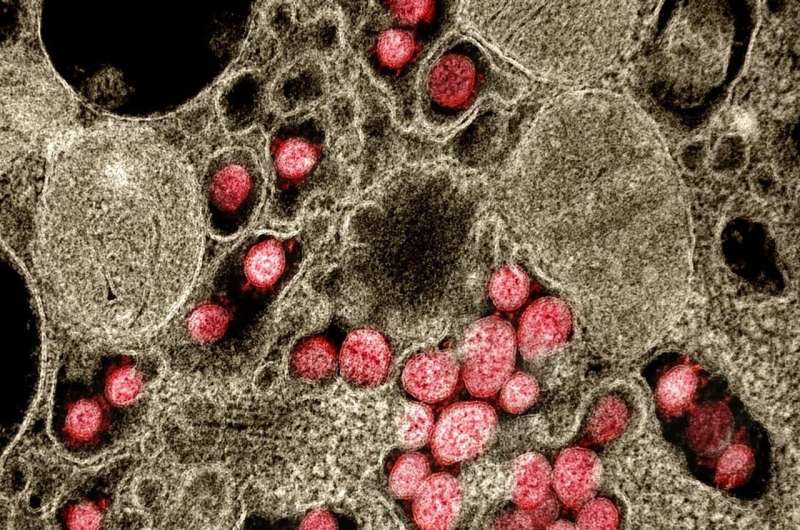Light the E-beacon: Method may lead to faster, more accurate test for coronavirus

You're worried that you may have been exposed to the coronavirus, so you decide to take a test. But which do you choose?
You can grab a rapid test at the local pharmacy and get your results in 15 minutes—but there's a chance those results won't be accurate. Or you can head to the doctor's office for a test with more reliable results—but you won't know the results for another day or three.
New research from Binghamton University Associate Professor of Chemistry Brian Callahan could be a game-changer. He uses a new methodology to detect SARS-CoV-2 that can produce reliable results more quickly than other methods.
Methods to detect SARS-CoV-2, the virus that causes COVID-19, come in two types. The first detects the virus protein or "antigen," the basis of the rapid tests found at local stores, with results typically coming back in around 15 minutes. The second type are molecular tests designed to detect virus nucleic acid, which can take anywhere from one to three days to return results.
Why so long? In the very specific and sensitive molecular tests, specimens must be shipped to testing labs, where the samples are then processed and analyzed by technicians with specialized training. As a result, they're considered by scientists as the gold standard for testing due to their reliability, although their long wait time makes them cumbersome for patients.
"We focused on cutting down the wait time for molecular testing. We developed a nucleic acid sensor—we call it an E-beacon—that has the potential to speed sample turn-around time while maintaining the sensitivity and specificity parameters that make molecular testing so powerful," Callahan said.
Enzymatic beacons
Enzymatic beacons are engineered "bioconjugates" with two key components: a light-generating enzyme and a DNA probe, Callahan explained. The components are stitched together via a recently-patented method.
In the E-beacons prepared for SARS-CoV-2, the DNA probe recognizes a specific sequence in the virus' spike gene; that recognition event in turn causes the light output from the attached enzyme to increase. The more virus nucleic acid in a sample, the brighter the light signal from the enzyme component of the E-beacon, Callahan explained.
E-beacons can provide positive or negative results more rapidly than molecular tests, and without the expensive instrumentation required by polymerase chain reaction (PCR) based testing.
"As of now, our E-beacons appear to be just as specific and even more sensitive than detection methods used in current SARS-CoV-2 molecular tests," said Callahan.
He acknowledged that the E-beacon experiments haven't yet been done outside the lab, which is the likely next step.
Where could this lead? Imagine a walk-up, automated testing device that somewhat resembles a vending machine. Users would deposit a testing swab into a collection port. The molecular tests would then run autonomously within the machine, sending out the results via cell phone in about two hours.
E-beacons represent an attractive alternative to the current testing methods, and not just for SARS-CoV-2. Because of their modular design, they can be reconfigured easily for detecting other viral or bacterial pathogens, Callahan said.
The paper was accepted for publication by the journal ChemBioChem.
More information: Brian Callahan et al, Enzymatic Beacons for Specific Sensing of Dilute Nucleic Acid., ChemBioChem (2021). DOI: 10.1002/cbic.202100594


















